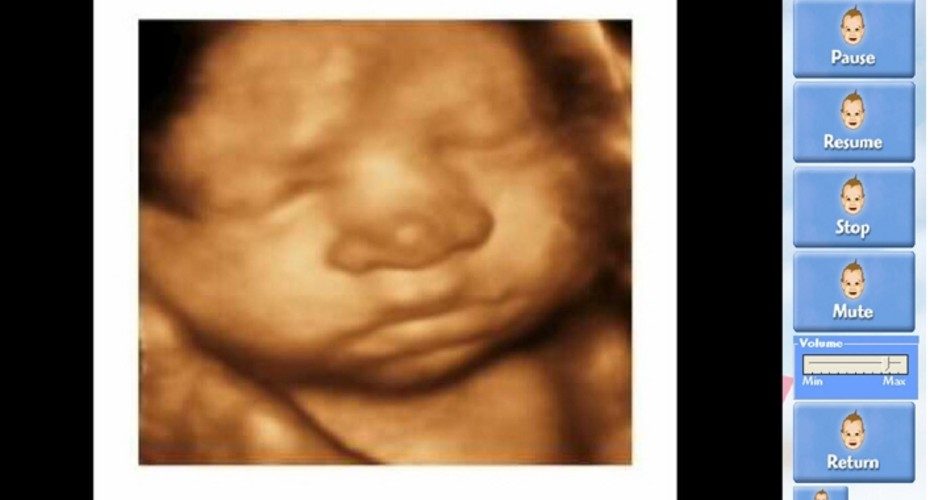
The Supreme Court struck down an Oklahoma official’s request for appeal that sought to restore Oklahoma’s ultrasound law, which would have allowed women a chance to see an ultrasound of their unborn child prior to an abortion. The Supreme Court has opted to let a state Supreme Court ruling on the 2011 Oklahoma ultrasound law remain in effect.
Life News reported, “The measure allowed women to see the image of the ultrasound of the unborn baby — which is something abortion clinics don’t routinely allow … though ultrasounds are normally done prior to abortions to ascertain the age of the baby before the abortion.”
As noted by Life News, the Supreme Court often rejects cases that come before the court, particularly those that have already received rulings in state Supreme Courts.
Still, pro-life advocates in Oklahoma are unhappy.
Oklahoma Attorney General Scott Pruitt, the official who appealed the lower courts’ ruling, said, “The law is about presenting abortion accurately with full information about the outcome.”
A suit was filed against the law on behalf of Nova Health Systems, which operations an abortion center in Tulsa. The organization had previously filed multiple lawsuits against pro-life legislation over the years. The suit claimed that the ultrasound measure is unconstitutional because it violates women’s and abortion practitioners’ constitutional speech rights and “impermissibly burdens the fundamental rights of plaintiff’s patients to terminate a pregnancy and avoid unwanted speech in a private setting.”
The suit adds, “In addition, the Act exposes abortion providers to an array of intimidating civil and administrative penalties to which no other health care providers in the state are exposed.”
Supporters of the bill recognize that it protects the pregnant mothers and provides them with the details necessary to make an informed decision. “We have an obligation to protect our citizens and make sure abortion is held to the same standard as any medically informed decision,” Pruitt states.
Mary Spaulding Balch, an attorney and the director of the Department of State Legislation at the National Right to Life Committee, observed:
Ultrasound laws save lives. According to a 2011 Quinnipiac University study, “ultrasound requirement laws reduce the odds of a woman having an abortion quite substantially.” This finding would explain why ultrasound laws provoke such powerful reactions of our opponents even though ultrasounds are routinely performed and are required by abortion providers prior to the performance of any abortion. This law is necessary to ensure that mothers have the opportunity to view an ultrasound prior to consenting to an abortion.
“This law protects a mother’s right to know something about her developing unborn child. It gives her a window to her womb. It helps to prevent her from making a decision she may regret for the rest of her life and it empowers her with the most accurate information about her pregnancy so that she can make a truly informed ‘choice’,” Balch added.
Ultrasound laws are becoming increasingly popular, with over 20 states having some type of ultrasound-related requirement, ranging from requiring doctors to offer ultrasounds to mandating one for all women pursuing abortions, with some exceptions.
The laws have been challenged in court repeatedly, with varied results.
In Texas, for example, a federal appeals court found that the law passed constitutional tests because a “woman may simply choose not to look or listen” during the ultrasound.
It is unclear how effective ultrasound photos are in deterring abortions, as most abortion data predates the laws. However, there are indications that they do have an impact.
“There is anecdotal evidence from centers from various states regarding the huge percentage of women who are ‘abortion-minded’ and see an ultrasound and they change their mind and choose life,” said Stephen Clark, president of Project Ultrasound, an Austin, Texas-based nonprofit that purchases ultrasounds for pregnancy centers.
According to Focus on the Family, an organization in Colorado Springs, Colorado, founded by evangelical Christian Dr. James Dobson, that provides grants to pregnancy centers for ultrasound machines, reports that since its ultrasound program began in 2004, “the estimated number of babies saved” is over 200,000.
An Akron, Ohio-based organization, ICU Mobile, states on its website that “86.9 percent of women considering an abortion who see their baby aboard an ICU Mobile choose life.” That group breaks down its figures, from 2010, as such: Their mobile units provided ultrasound images to 1,389 women. Of those women, 613 were “abortion minded or abortion vulnerable.” Five hundred and thirty-three of the women likely to have an abortion, which amounts to 86.9 percent, “made a decision for life.”
Writing on ICU Mobile and its impact on pregnant women, the Christian Post indicated that ICU Mobile is able to “attract 53 percent more abortion-minded women to their mobiles than ever set foot in a Crisis Pregnancy Center.” The Post added, “And 56.4 percent of those who have already decided to have an abortion choose life, and 87.8 percent who are considering an abortion choose life.”
An anecdote from ICU Mobile highlights the effectiveness that such a service can have on the decision to keep an unborn child.
A teenage girl in Memphis, Tennessee had contacted a member of the team stating, “I’m pregnant, I have an abortion tomorrow, but I want to come meet you.”
The story, found on MorningCenter.org continues:
After an ultrasound, counseling, and prayer, the girl was still set on having the abortion. Jill, a member of the team, said “if you’re going to be at the abortion facility tomorrow, so will we.” When the girl drove up, the mobile was there, and she went there first because she had a relationship with them.
After more counseling and prayer, she again decides for the abortion. Jill then says “when you come out, we’re going to be here for you. You’re going to need us when you have this abortion.” After twenty minutes in the abortion clinic, the girl changed her mind, and put her daughter up for adoption.”
In Texas, there have been 10 to 15 percent fewer abortions since the implementation of sonogram laws.
Researchers at Ibis Reproductive Health, the University of Texas, and the University of Alabama at Birmingham conducted a study aimed at “improv[ing] women’s reproductive autonomy,” which shows a reduction in abortions since the state enacted strict requirements for women seeking abortions.
However, the study did not wish to credit the ultrasound laws for the reduction. The study claims that abortions are reduced because of economic hurdles, not because women changed their minds after seeing sonograms of their unborn children and discussing abortion with their doctors. LifeSiteNews reported, “Researchers actually credit the obstacles with the reduction in abortion and say it isn’t related to women changing their minds, but just to the difficulties they face in obtaining an abortion.”
But such a conclusion supposes that a mandatory 24-hour waiting period and an ultrasound are onerous requirements to obtain elective surgery. LifeSiteNews observed, “Rarely, if ever, does anyone have same-day surgery in this nation unless it’s emergency surgery.”
Image of an infant in the womb, captured using ultrasonography: AP Images



